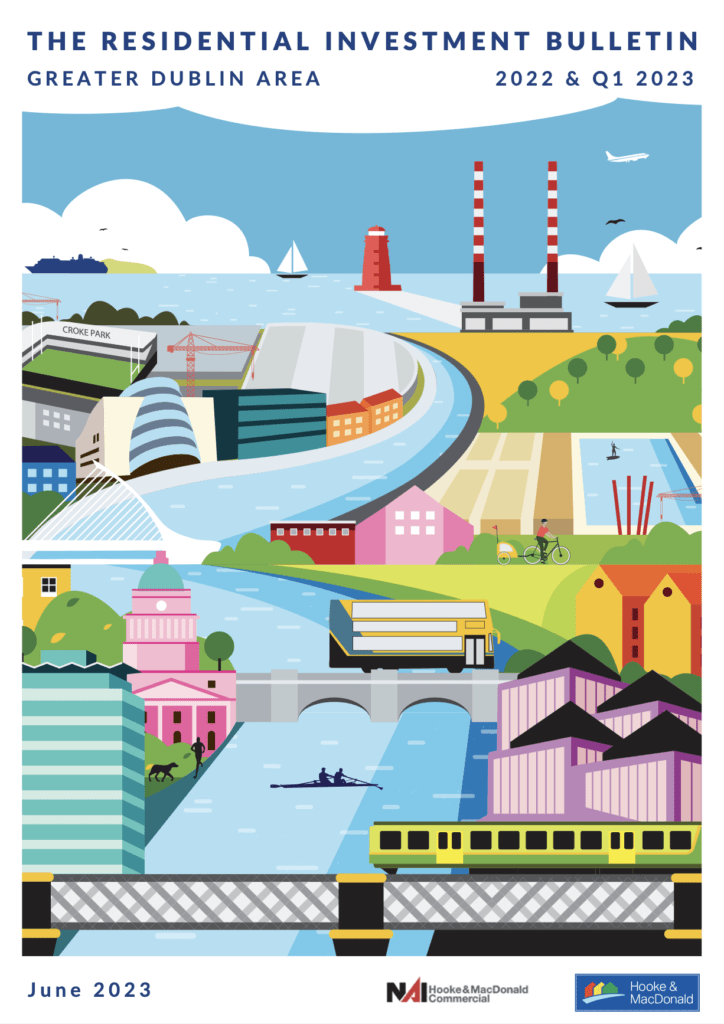Unlocking the Potential of Dublin’s Residential Investment Market

“A broken model calls for innovative solutions”
As a non-bank real estate and development funder, we have early sight of the trends and dynamics shaping the residential investment landscape locally, and more data is always welcome. The recently released Hooke & MacDonald Residential Investment Bulletin for the Greater Dublin Area provides some valuable insights into the market’s 2022 performance and 2023 prospects. It is evident that despite some challenges, Dublin remains an attractive destination for residential investment, driven by favourable demographics and sustained demand. The report reveals a surge of interest in the multi-family/private rental sector over the past 15 months. While the second half of 2022 experienced a temporary slowdown, it was primarily due to external factors such as inflation and rising interest rates. Investors, recognising Ireland’s potential, continued to view Dublin as a prime target for residential investment. This sentiment was reinforced by the region’s robust rental market and portfolio performance, which facilitated the progression of early 2022 investment deals.
One key insight is around the impact of funding costs on investor requirements. As interest rates increased, investors sought larger deal sizes to secure their desired returns. Nevertheless, Dublin’s appeal persists, with a diverse range of capital, including new entrants, actively assessing opportunities in the market. The recent influx of investors visiting the region indicates a positive outlook for securing new funding, partnerships, and sales.
Underpinning this investment interest is the demographic shift revealed by the Irish Census 2022. The population of Ireland has exceeded five million for the first time since the Great Famine, with an 8 percent increase since the previous Census in 2016. Such population growth translates to a demand for housing and serves as a key driver for investment decisions. Additionally, the arrival of over 70,000 refugees from Ukraine since early 2022 further contributes to this demand.
Examining the transactions in 2022, it is noteworthy but not entirely unsurprising that the majority of multi-family/private rental sector spending involved new builds. Notable transactions, such as the forward sale of 242 apartments at Brickfield Square, Crumlin, demonstrate the market’s potential for growth and attract prominent players like Greystar. These developments highlight the maturing nature of the Dublin market, with numerous investors establishing portfolios and completing forward purchase projects.
Nonetheless, challenges exist, primarily in the form of viability. The slowdown in apartment construction can be attributed to rising interest rates, construction cost inflation, and the disconnect between affordability for end-users and economic returns for developers. The Government has taken steps to enable apartment delivery, but these measures primarily impact the owner-occupier market. A more comprehensive approach, including incentives for rental market development, is needed.
Construction costs have soared, and the industry faces capacity constraints, hindering the increase in new supply. As a result, apartment commencements do not match planning consents. The funding and development model for apartments in Ireland requires urgent attention. While private rental sector development has been instrumental in apartment construction, the current environment restricts its potential. A broken model calls for innovative solutions, including front-loaded subsidies to kickstart development and address the pressing need for rental properties.
The report calls for a balanced approach, involving private and public sector cooperation, in order to unlock the full potential of Dublin’s residential investment market.
The report can be download in full from Hooke and MacDonald’s website.
Ian Lawlor
086 3625482
Managing Director
Lotus Investment Group
